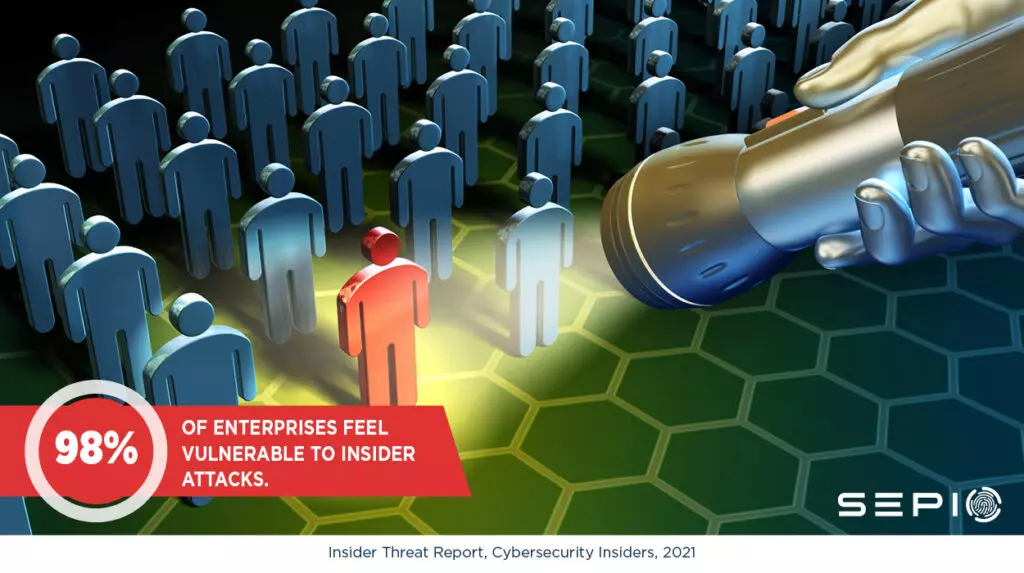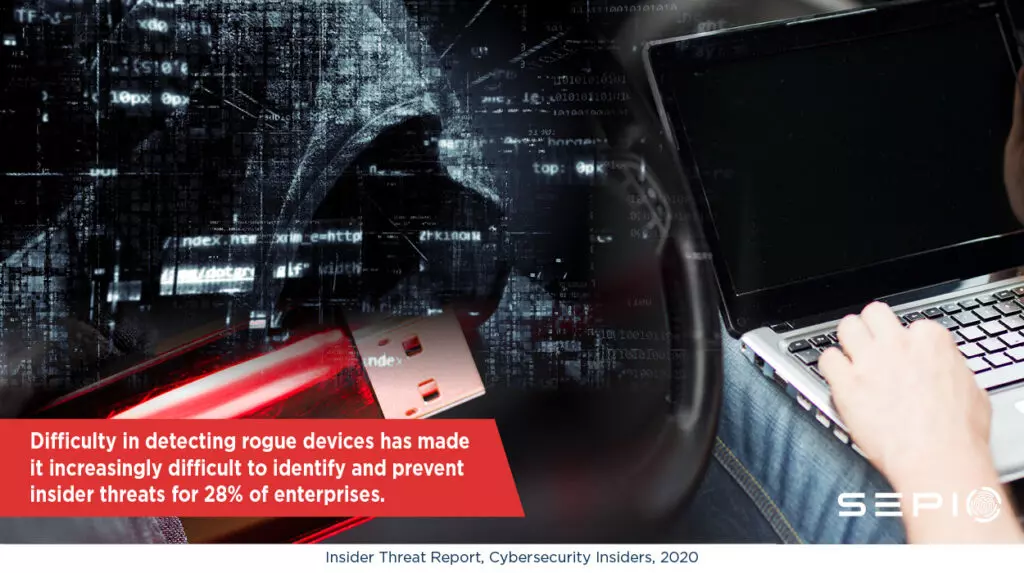Employees play a crucial role in cybersecurity, acting as the first line of defense against cyber-attacks. Their actions, awareness, and behaviors significantly impact the overall information-security posture of an organization. However, employees can inadvertently become a weak link in the cybersecurity chain, which can lead to employee cybersecurity threats. This often happens through unintentional actions or by falling victim to phishing or other social engineering attacks. An “insider” is anyone with authorized access to sensitive systems. This includes employees, contractors, vendors, and anyone with access to company resources. Ensuring proper security training and enforcing strict security policies can help mitigate these risks and reduce employee cybersecurity threats.

Unintentional Employees’ Cybersecurity Threats
Unintentional threats often arise from negligence or lack of security awareness. For instance, mishandling hardware can lead to a data breach and expose the organization to cyber risks. According to a report by the Ponemon Institute, over 50% of security breaches stem from employee negligence.
Malware attacks frequently exploit hardware vulnerabilities. Hackers use social engineering to distribute devices like NinjaCables, which can execute a cyber attack when connected to a system. Similarly, public charging stations pose security risks. These devices can covertly bypass authentication mechanisms, gaining access to sensitive information.
Similarly, charging stations at airports pose significant cybersecurity risks. A charger disguised as a regular device can secretly access a user’s data, including work-related information. Employees who connect their devices to these rogue chargers unknowingly expose the organization to potential data breaches.
Intentional Employees’ Cybersecurity Threats
Intentional threats, though less common, pose significant risks. These incidents, accounting for 26% of insider attacks, often stem from financially motivated or disgruntled employees. Compromised devices like bad USB thumb drives can introduce ransomware or enable hacking attempts.
Attackers may use coercion, including phishing or blackmail, to manipulate employees into executing security-risk actions. These security vulnerabilities can lead to severe data-security breaches. Effective incident response and strict authentication controls are vital in detecting and preventing such attacks.
Third Parties Cybersecurity Threats
Third-party insiders, such as contractors, pose unique cybersecurity challenges. These individuals may have access to sensitive information but lack the oversight of full-time employees. This opens avenues for hackers to exploit security vulnerabilities through cybercrime tactics like the “evil maid” or “evil patient” attacks.
Employing comprehensive security policies and security training programs for third-party insiders is essential. Organizations should implement strict passwords policies and utilize advanced encryption methods to protect against unauthorized access.
Employees’ Role in Cybersecurity: A Key Defense
Throughout this discussion, we’ve highlighted how employees’ roles in cybersecurity are pivotal in defending against internal and external threats. Why do attackers often target employees? Because rogue devices can operate covertly and bypass traditional security measures, raising few alarms and allowing for deep infiltration. According to the Insider Threat Report, 28% of enterprises find it increasingly difficult to detect rogue devices, making insider attacks harder to identify and prevent.

Overcoming Detection Challenges in Employees’ Cybersecurity
The increasing sophistication of spoofed devices, such as juice-jacking chargers, poses a significant threat to employees’ cybersecurity. These rogue devices can easily bypass traditional firewall defenses and perimeter security measures, exploiting vulnerabilities in the physical layer. Detection becomes particularly challenging because conventional tools like NAC (Network Access Control), EPS (Endpoint Protection Systems), IDS (Intrusion Detection Systems), and IoT network security solutions are not designed to detect hardware-level intrusions.
To counter these threats, organizations need advanced solutions that provide deep visibility into hardware assets. By addressing these detection gaps, enterprises can effectively safeguard against unauthorized devices and reduce cybersecurity risks.
Securing Organizations with Sepio’s Platform
Sepio’s platform mitigates these security risks by offering deep physical-layer visibility. This helps organizations detect unauthorized hardware and prevent data breaches. Sepio’s Zero Trust Hardware Access approach ensures no device is overlooked. By identifying and blocking rogue devices, Sepio helps safeguard against employee cybersecurity threats and potential security breaches.
Sepio’s solution is deployed without additional hardware and provides complete visibility within 24 hours. This comprehensive detection helps protect against malware, hacking, and other forms of cybercrime.
Enhancing Security Awareness and Risk Management
Employees are pivotal to an organization’s security and cybersecurity strategy. By understanding their role, adhering to security policies, and participating in security training, employees can protect against security vulnerabilities and potential cyber-attacks.
Sepio’s patented technology enhances data-security, supports incident response, and prevents denial-of-service attacks caused by rogue hardware. To improve your application security and mitigate security risks, trust Sepio to deliver comprehensive device visibility and protection.
Schedule a demo to see how Sepio can protect your organization from employee cybersecurity threats and ensure complete hardware security.






